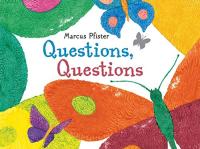Key Information
Focus
Appropriate Group Size
What is revisiing?
Revising is an important way to learn about the craft of writing. Phyllis Whitney famously wrote, “Good stories are not written. They are rewritten.”
Revision is the process of reviewing, refining, and improving written compositions. It is a crucial step in the writing process that helps students develop their writing skills and produce more polished and effective pieces of work. Revision goes beyond simply correcting spelling and grammar; it involves rethinking and reworking the content, structure, and style of a written piece.
Why teach revising?
- It’s an important part of the writing process.
- Revising gives students an opportunity to reflect on what they’ve written.
- Revising is a way to learn about the craft of writing.
- Revision is closely tied to critical reading; in order to revise a piece conceptually, students must be able to reflect on whether their message matches their writing goal.
How to teach revising
Research on revision and the quality of writing shows that strategy instruction is very powerful. When using strategy instruction, teachers should do the following:
1. Explain the revising process explicitly: provide specific, meaningful goals for the revision and/or clearly identify the audience.
One way to make the criteria very specific is to focus on genre. For example, when teaching narratives, develop a simple checklist that aligns with good narrative writing. For example, ask students “Are all the story elements included? Are the characters clearly described? Does your story show how characters feel?”
Another approach focuses not on genre, but rather overall qualities such as clarity and detail. For example, “Is there anything that is difficult to understand?” “What vocabulary words could you add to make the story more interesting?”
2. Model the strategy with think-alouds. This can be achieved by displaying one writing sample on a chart, and using that sample to model and discuss how to revise the paper in a way that would improve it.
3. Provide guided practice with feedback. This can be done through peer editing and through meaningful teacher–student dialogue. These collaborative efforts reinforce the understanding that writing is a social process in which a message is created for an audience.
4. Gradually work toward independent mastery by students.
Peer editing is a very successful way to help students develop revision skills. This is particularly true when the peer groups have explicit goals for the revision. For example, find one place in the writing where the message is unclear, or one place where a different vocabulary word could be used.
5. Go beyond sentence-level writing
It’s important to help students focus on more than sentence-level revisions. The 6 + 1 Trait writing program encourages a bigger-picture revision process through attention to ideas, organization, voice, word choice, and more. Their revision checklist includes items such as:
- The topic is narrow and manageable.
- The details support the idea.
- The order of details makes sense.
- The writing has an interesting beginning and ending.
6. Revision begins with the first draft
Although it’s rarely considered this way, revisions include any changes a writer makes to a draft, including decisions made both before the writing begins and as drafting is taking place. Strategies that engage students before writing begins — for example RAFT and the story sequence strategy — can help students develop a strong first draft.
7. Revising across the content areas
These steps for revision can be used across content areas. The types of writing that could take place include writing the steps to a word problem (math), reporting results from an experiment (science), and summarizing an important historical event or figure (social studies).
Watch a demonstration: the revising toolbox
A hands-on and engaging tool box provides students with the necessary tools to revise their work. (Balanced Literacy Diet: Putting Research into Practice in the Classroom)
Watch tips on teaching students to edit their writing
In this video, you’ll find three tips for teaching K-2 students to edit their own writing. (Susan Jones Teaching)
Watch a lesson on adding key details (whole class)
Help your students understand the various interacting stages of the writing process, including revising. In this video, students work on adding detail to their writing. (Balanced Literacy Diet: Putting Research into Practice in the Classroom)
Watch a lesson on sentence expansion (whole class)
In this writing lesson, Maria Bailey, a literacy support teacher at Riverside Elementary School in Toledo, Ohio, works with students on sentence expansion — adding details to make sentences more interesting and informative. Students answer the question “why?” with some help from the word “because” to elaborate on a simple idea. The lesson begins with the whole group, then students work in partners, and finally they write expanded sentences independently. In writing longer sentences, students build their understanding of sentence structure. (From our sister project Reading Universe )
Watch a story about peer critique: creating a culture of revision (whole class)
Your students can improve their work by recognizing the strengths and weaknesses in the work of others. (Edutopia)
Voices of experts: What are the two steps of revising writing?
Joan Sedita, founder of Keys to Literacy, explains the two key steps students need to learn in the revision process when writing: thinking critically about what they have written and how they can make improvements and proofreading. (From our sister project, Reading Universe )
Collect resources
Many teachers use checklists and mnemonic devices to help students revise their writing. Here are a few examples:
Differentiate instruction
For second language learners, students of varying reading skill, and for younger learners
New writers and ELL students may initially have difficulty revising their work. Revising to them often means painstaking recopying, and revisions are often done only at the sentence level rather than to the piece as a whole.
- Make judicious use of peer editors. Provide a supportive peer with whom your student can work constructively.
- Provide very clear goals for the revision process, for example give simple directions to add ideas to make their papers more interesting.
- Allow students to use word processors for writing. They can ease the physical process of writing, enable students to produce error-free final copies, and make revision possible without needing to recopy.
See the research that supports this strategy
Graham, S. & Harris K. (2007). Best practices in teaching planning. In S. Graham, C. MacArthur, & J. Fitzgerald (Eds.) Best practices in writing instruction. New York: Guilford.
MacArthur, C. (2007). Best practices in teaching evaluation and revision. In S. Graham, C. MacArthur, & J. Fitzgerald (Eds.) Best practices in writing instruction. New York: Guilford.
Children’s books to use with this strategy
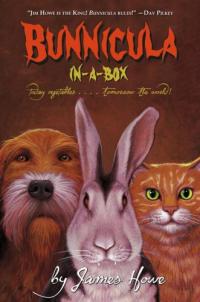
The Bunnicula Collection: Books 1 to 3

Clementine’s Letter
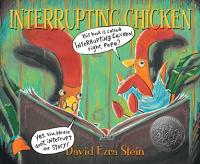
Interrupting Chicken
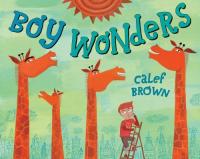
Boy Wonders
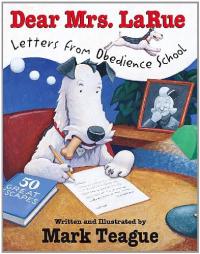
Dear Mrs. LaRue: Letters from Obedience School
